
If you’re an ecommerce business, you could tout the effectiveness of your product 24/7, but that doesn’t mean anyone is going to believe what you say. Of course you’re going to talk positively about your business—it’s your business, after all. That’s why positive social proof is so important.
Social proof is a phenomenon in psychology wherein people will mimic the actions of others to adopt what they perceive as correct behavior. For example, Denise has an issue and sees that Becky resolved that issue by using a certain product. Becky’s success in using the product can do so much more to influence Denise’s decision than corporate messaging ever could.
Most non-Amazon ecommerce pages have an average conversion rate between 2%-3%. With social proof, you can boost that number up over 10%. Content is still king when it comes to digital marketing, but you can utilize social proof in your content both on and off the page to make a more convincing argument for your ecommerce shoppers. But how can you leverage social proof to increase your conversions? Read on to find out.
Customer Reviews
Your satisfied customers can be one of the best social proof resources in your arsenal. A strong customer review or testimonial will do a lot for your social proof. This is as true for ecommerce as it is for other business verticals. Take this example below from a legal website:
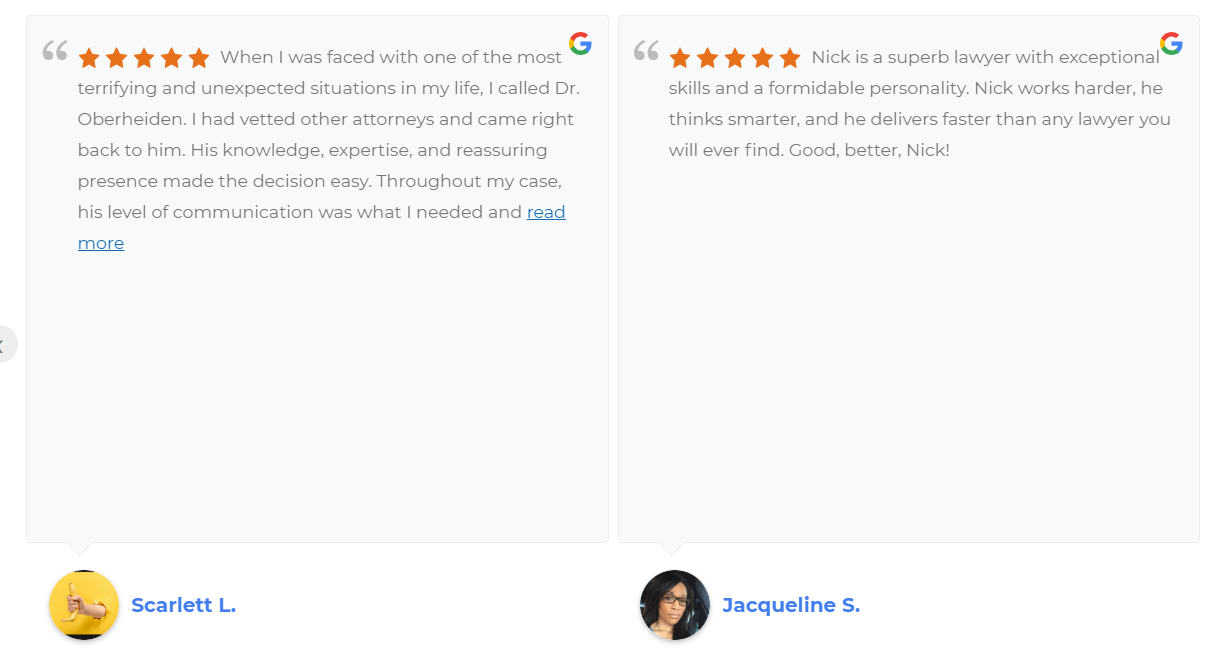
Image Source
By featuring these five star reviews, this law firm can ease the minds of potential clients. They understand that a whopping 97% of people who are seeking legal services use a search engine to find a lawyer. They further increase their own value by ensuring that when those searchers land on their page, there are positive reviews waiting.
It’s the same for ecommerce businesses. Amazon’s use of star ratings next to the products it sells is ecommerce social proof at play. They know that 92% of people will believe the recommendation of a peer, whereas 70% of shoppers will believe the recommendation of someone they don’t even know.
It all boils down to pain points. Customers have them, they want them alleviated, and they want proof that someone in a similar situation found relief through your products. More than 59% of Americans live paycheck to paycheck, so it makes sense that people are selective in where they spend money. They need the extra incentive offered by a strong customer testimonial. That’s why it’s important for ecommerce businesses to include customer reviews and testimonials both on their homepage and individual product pages.
Of course, there are many ways to list customer testimonials. You can write them out on the page, include images, or (most effectively) create video testimonials where your satisfied customers generate social proof by actually talking about the amazing experience they had with your company.
Off-Page Reviews
For more than 20 years, businesses have been increasing their visibility on popular search engines such as Google by optimizing their websites with SEO. How? Via content marketing, also branded as “the core of modern SEO.”
A lot of people don’t realize that SEO occurs both on and off your ecommerce website. You could optimize with every keyword under the sun and use all of the SEO tools in existence. But without backlinks, you aren’t going to get anywhere:
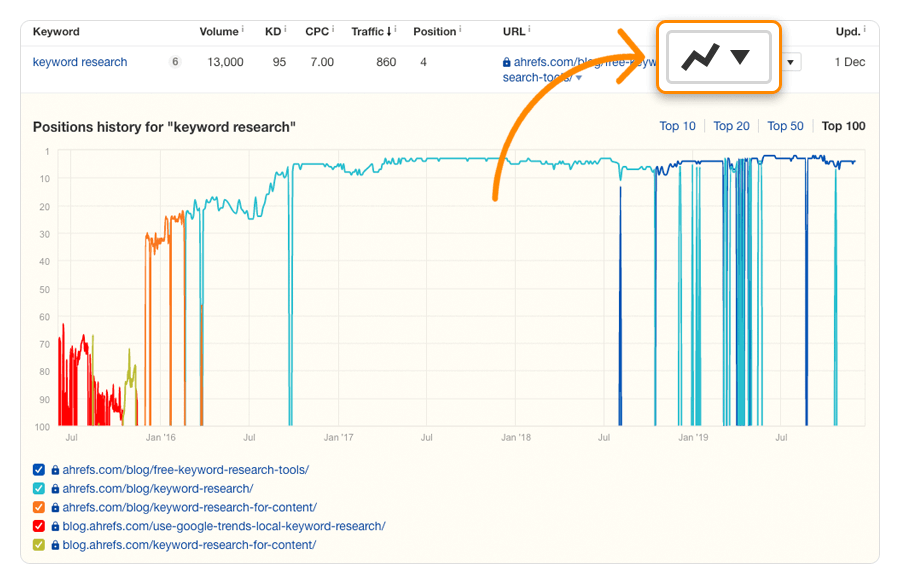
Image Source
Why are we talking about SEO and ecommerce marketing in a social proof article? Because reviews of your ecommerce products posted on other websites can enhance your social proof and SEO score at the same time by generating backlinks. But what kind of reviews work best on other pages?
Some websites specialize in comparison reviews—they’ll take your product and compare it to one of your chief competitors. These reviews will feature links back to your site while also providing important social proof to your prospects. Here is an example of comparison off-page reviews comparing LastPass vs. 1Password:
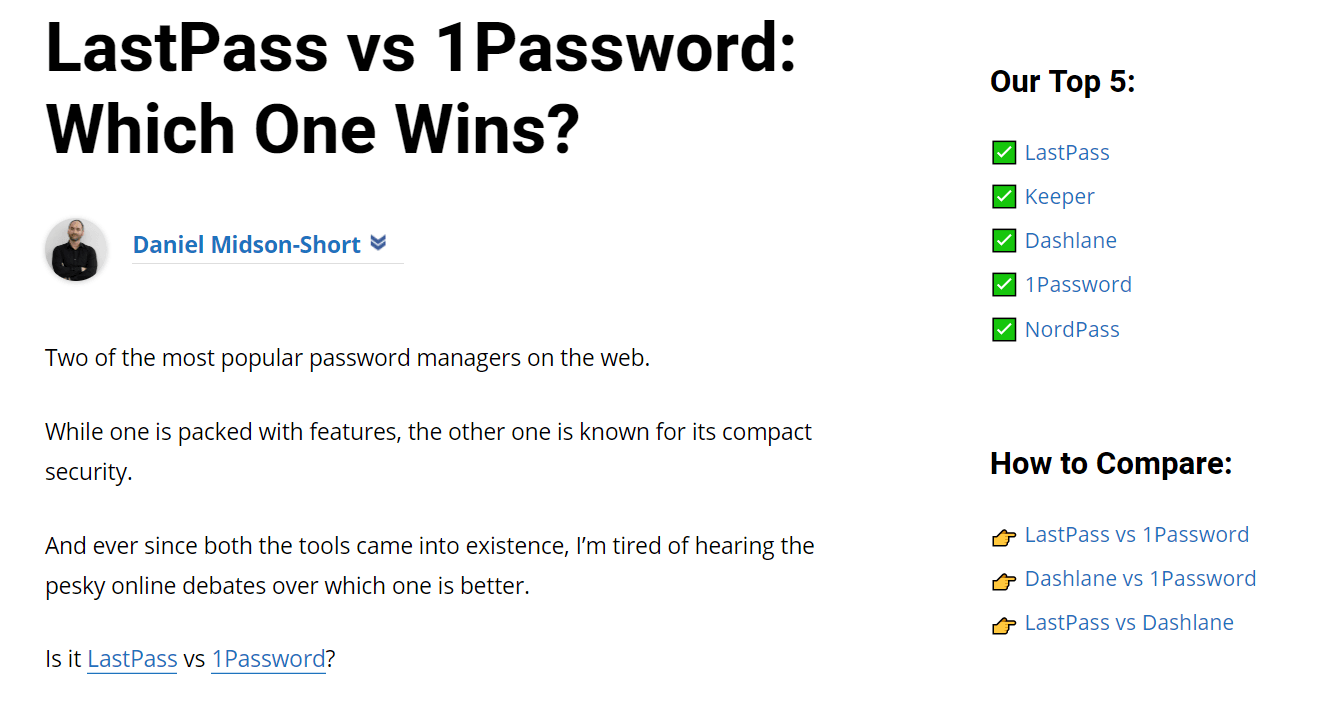
Image Source
Then there are straight up single product reviews. These reviews are a deep dive on your products or services specifically, without talking too much about your competitors. Here’s an example for the Zoma Mattress:

Image Source
Finally, you have roundup articles. These blogs take the top five to 10 products for a specific vertical and give each one their own moment in the sun.
The kind of social proof featured above can actually help you more than on-page content. It’s coming from a third-party source, so there’s no corporate slant to the narrative, and users will trust it more. You can encourage these blogs to produce reviews on your product by offering a free demo. On top of that, you’re getting a much-needed boost to your SEO score.
Apply to Product Pages
There are a lot of social proof elements that can be applied to product pages. For starters, consider adding the real-time number of people who have purchased the product somewhere on the page. If customers see that this product is selling well, they’re going to have more confidence in their purchase decision.
This is also a perfect place to list some of the customer testimonials mentioned above. Also, if there is a glowing review of your product out there on another page, quote that review and link out to the article so that your prospects can see some third-party commentary.
You could also display a “like” counter somewhere on your product page. If a customer has purchased the product and had a positive experience, they can click “like” or a thumbs up icon. This creates some visual social proof that will not go unnoticed by your prospects.
Aside from writing reviews, your customers should also be able to answer questions asked by other users and add their own images of your product for others to see:
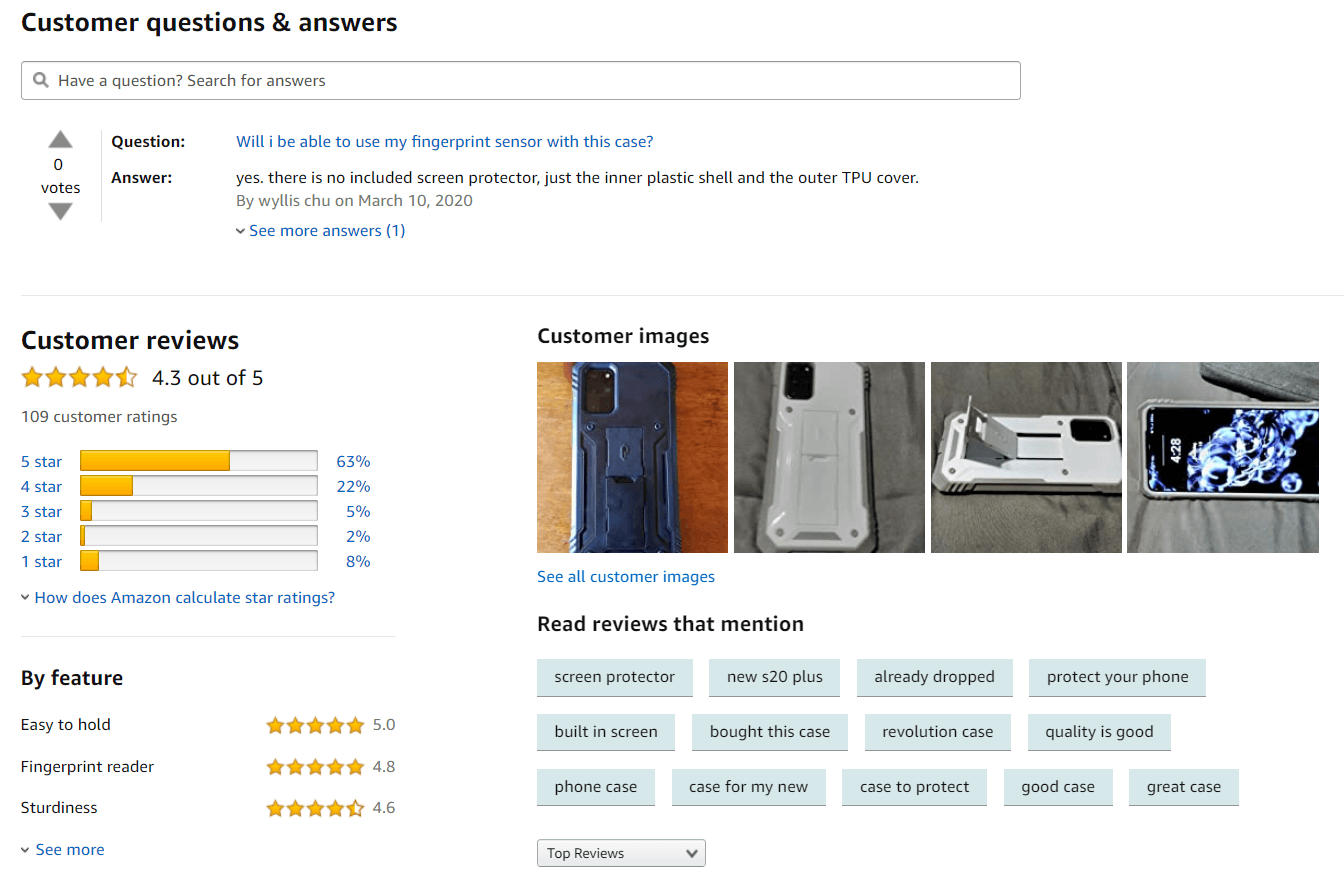
Image Source
In the above image from an Amazon product page, you can see the customer questions and answers up top, the star ratings on the left, and images added by customers on the right. That’s social proof at play.
Case Studies
A case study is an in-depth look at a specific customer’s success story from the beginning of their journey through to their purchasing decision and beyond. Case studies are typically more formal in nature, but they get the job done and provide social proof with enhanced authority:
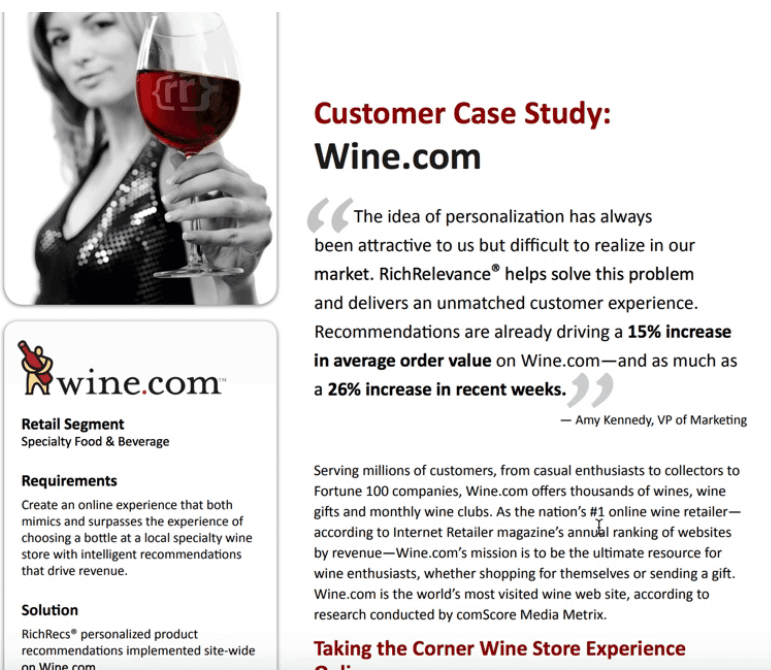
Image Source
A good case study will have written copy, some visual aids and images, and a video to back it all up. Prospects will want to see specific information on how your product or service was able to turn this customer’s situation around. That means numbers and statistics. If you don’t have graphic design skills, just outsource to freelancers who can whip up quality graphics for your case study in a few days tops.
Case studies are easily shared across social media platforms. You can post a video or screenshot of your case study on Instagram, post links on Twitter or Facebook, and share B2B case studies on LinkedIn.
Real-Time Statistics
Numbers can’t lie, and real-time statistics are a great way to show off the power of your products in an impartial way. As we mentioned before, a running tally of the number of people who have purchased your product or service could be an excellent statistic. You could also show how many people are currently viewing a page.
This appeals to an important aspect of social proof: Fear of Missing Out (FOMO). This is a psychological trigger in the human mind that creates apprehension in a prospect that they are missing out on fun or rewarding experiences that your customers are enjoying.
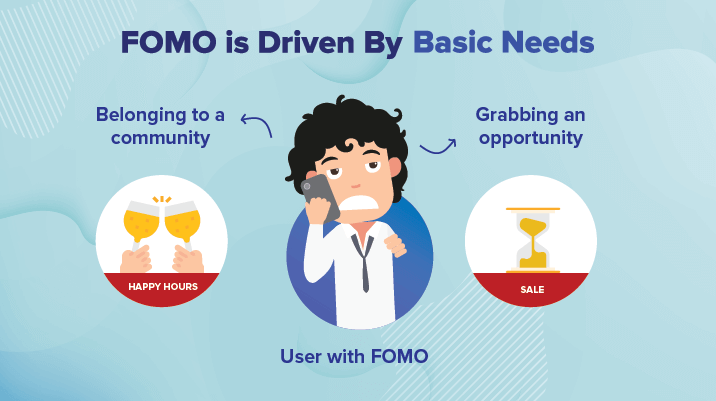
Image Source
By seeing that something is popular, a potential customer will want to join in—it’s human nature at work. Listing your registrations, purchases, or any other statistic about a product that helps reinforce FOMO will spark the buying decision in the minds of your prospects and push them toward a rewarding conversion in your ecommerce store.
One stellar way to do that is directly on Google search results, too, via schema markup for reviews:

As Jeremy Skillings says, this can actually boost rankings for your products having a compounding impact: “Typically the algorithm is trying to find a way to measure what the user wants and reward that.” Businesses that have implemented statistics on their landing pages, product pages, and checkout screens have been known to see up to a 15% bump in conversions.
Celebrity Endorsement
Another great way to generate social proof for your ecommerce products is through celebrity endorsement, also known as celebrity social proof. William Shatner vouching for Priceline or Samuel L. Jackson speaking for Capital One goes a long way toward convincing the fans of specific celebrities to try out these services.

Image Source
If you’re a smaller company that can’t afford the endorsement of a Starfleet Captain or a Jedi Master, you can still receive a celebrity bump on a much smaller level through social media influencers.
When you’re talking about an influencer, you’re talking about someone with a large social media presence. Maybe that’s a huge following on Instagram or a hefty subscriber list on YouTube. By having them either model or talk about your products to their legions of followers, they’re creating social proof that will boost your conversion rate. What’s more, many of these influencers don’t even ask to be paid. Some of them will do it just for the free merchandise, so influencer marketing is a win-win, no-brainer situation.
While not a celebrity per se, it’s also helpful to get endorsements from experts in your field. For example, if you’re selling a dietary supplement, getting a licensed dietician to sign off on it is expert social proof at play.
In Conclusion
On the battlefield of ecommerce, social proof marketing is one of your greatest weapons. It sidesteps the inherent mistrust that a shopper has for corporate messaging and helps to strengthen confidence in both your products and brand as a whole.
By utilizing on- and off-page reviews, injecting social proof into product pages, creating case studies, showing off real time statistics, and making use of influencer endorsements, you’ll see a bump in your conversion rate that could never be achieved through regular corporate messaging.











